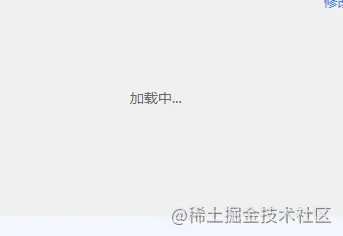 Web Front-end
Web Front-end
 Vue.js
Vue.js
 How to elegantly encapsulate third-party components in Vue? Introduction to packaging methods
How to elegantly encapsulate third-party components in Vue? Introduction to packaging methods
How to elegantly encapsulate third-party components in Vue? Introduction to packaging methods
How to elegantly encapsulate third-party components in vue? The following article will use examples to explore ways to more elegantly encapsulate third-party components in Vue. I hope it will be helpful to everyone!

1. Description of demand scenarios
During actual development, in order to reduce reinvention, improve work efficiency, and save development time and cost, It is inevitable to use UI component libraries, such as element-ui, which is very popular in web front-ends. But sometimes, we need to make some modifications based on the original component, such as an image component. We need to unify the specific image displayed when the image loading fails, and add it every time the component is used. It is troublesome and time-consuming. The key is the high maintenance cost. When you need to update the image that has been loaded incorrectly, You have to find and modify the places where this component is used again. (Learning video sharing: vuejs tutorial)
Another example is custom paging components, which are also very common. The style of the component and the number of pages per page supported by default. Encapsulation and reuse are beneficial in terms of maintainability and development efficiency.
However, it is not necessary to write a paging component from scratch, just encapsulate it on the original basis. So how to quickly and elegantly encapsulate the components of a third-party component library? v-bind="Encapsulate el-image as a custom-image component. All places where custom-image is used to display images. During the image loading process, the "Loading..." prompt will be displayed uniformly, and when a loading error occurs, a unified default image will be displayed. The following is a custom-image component loading process and the effect of loading errors.
2. Introduction to key technical points
1.v-bind="$attrs"
v The wonderful use of -bind="$attrs" is to create higher-level components. When encapsulating third-party components,
can automatically bind the v-bind attributes used in the parent scope. And pass down the encapsulated component using v-bind="$attrs". An introduction excerpted from the vue official websiteContains attributes that are not recognized (and obtained) as props in the parent scope
Binding (class and style except). When a component does not declare any prop, This will contain all parent scope bindings (except class and style), and can be passed through v-bind="$attrs" Import internal components - useful when creating high-level components.For example, after using v-bind="$attrs" for our encapsulated custom-Image component, We also have almost all the properties of el-image in the custom-Image component. And its effect and usage are the same as when we use el-image. In other words, we can use custom-Image by looking at el-image's article.
2.v-on="$listeners"
v-on="l ##l
It can be passed into internal components via v-on="$listeners" - very useful when creating higher level components.
An introduction taken from the vue official website
3. Code examples for encapsulating el-image
Examples of using custom-Image components
<custom-Image fit="fill" class="icon-img" :src="picPreview(expert)"></custom-Image>
Example of encapsulating el-image into a custom-Image component
<template>
<div id="CustomImage">
<el-image v-bind="$attrs" v-on="$listeners">
<div slot="error">
<img src="/static/imghw/default1.png" data-src="require('image-f/icon-empty-img.png')" class="lazy" : alt="图片加载失败.png"/>
</div>
<div slot="placeholder">加载中...</div>
</el-image>
</div>
</template>
<script>
export default {
name: 'CustomImage'
}
</script>
<style scoped>
#CustomImage {
.image-slot {
text-align: center;
}
.placeholder-slot {
text-align: center;
}
}
</style>(Learning video sharing: web front-end development, Introduction to programming)
The above is the detailed content of How to elegantly encapsulate third-party components in Vue? Introduction to packaging methods. For more information, please follow other related articles on the PHP Chinese website!

Hot AI Tools

Undresser.AI Undress
AI-powered app for creating realistic nude photos

AI Clothes Remover
Online AI tool for removing clothes from photos.

Undress AI Tool
Undress images for free

Clothoff.io
AI clothes remover

Video Face Swap
Swap faces in any video effortlessly with our completely free AI face swap tool!

Hot Article

Hot Tools

Notepad++7.3.1
Easy-to-use and free code editor

SublimeText3 Chinese version
Chinese version, very easy to use

Zend Studio 13.0.1
Powerful PHP integrated development environment

Dreamweaver CS6
Visual web development tools

SublimeText3 Mac version
God-level code editing software (SublimeText3)

Hot Topics
 1386
1386
 52
52
 How to use bootstrap in vue
Apr 07, 2025 pm 11:33 PM
How to use bootstrap in vue
Apr 07, 2025 pm 11:33 PM
Using Bootstrap in Vue.js is divided into five steps: Install Bootstrap. Import Bootstrap in main.js. Use the Bootstrap component directly in the template. Optional: Custom style. Optional: Use plug-ins.
 How to add functions to buttons for vue
Apr 08, 2025 am 08:51 AM
How to add functions to buttons for vue
Apr 08, 2025 am 08:51 AM
You can add a function to the Vue button by binding the button in the HTML template to a method. Define the method and write function logic in the Vue instance.
 How to reference js file with vue.js
Apr 07, 2025 pm 11:27 PM
How to reference js file with vue.js
Apr 07, 2025 pm 11:27 PM
There are three ways to refer to JS files in Vue.js: directly specify the path using the <script> tag;; dynamic import using the mounted() lifecycle hook; and importing through the Vuex state management library.
 How to use watch in vue
Apr 07, 2025 pm 11:36 PM
How to use watch in vue
Apr 07, 2025 pm 11:36 PM
The watch option in Vue.js allows developers to listen for changes in specific data. When the data changes, watch triggers a callback function to perform update views or other tasks. Its configuration options include immediate, which specifies whether to execute a callback immediately, and deep, which specifies whether to recursively listen to changes to objects or arrays.
 What does vue multi-page development mean?
Apr 07, 2025 pm 11:57 PM
What does vue multi-page development mean?
Apr 07, 2025 pm 11:57 PM
Vue multi-page development is a way to build applications using the Vue.js framework, where the application is divided into separate pages: Code Maintenance: Splitting the application into multiple pages can make the code easier to manage and maintain. Modularity: Each page can be used as a separate module for easy reuse and replacement. Simple routing: Navigation between pages can be managed through simple routing configuration. SEO Optimization: Each page has its own URL, which helps SEO.
 How to return to previous page by vue
Apr 07, 2025 pm 11:30 PM
How to return to previous page by vue
Apr 07, 2025 pm 11:30 PM
Vue.js has four methods to return to the previous page: $router.go(-1)$router.back() uses <router-link to="/" component window.history.back(), and the method selection depends on the scene.
 How to query the version of vue
Apr 07, 2025 pm 11:24 PM
How to query the version of vue
Apr 07, 2025 pm 11:24 PM
You can query the Vue version by using Vue Devtools to view the Vue tab in the browser's console. Use npm to run the "npm list -g vue" command. Find the Vue item in the "dependencies" object of the package.json file. For Vue CLI projects, run the "vue --version" command. Check the version information in the <script> tag in the HTML file that refers to the Vue file.
 How to use function intercept vue
Apr 08, 2025 am 06:51 AM
How to use function intercept vue
Apr 08, 2025 am 06:51 AM
Function interception in Vue is a technique used to limit the number of times a function is called within a specified time period and prevent performance problems. The implementation method is: import the lodash library: import { debounce } from 'lodash'; Use the debounce function to create an intercept function: const debouncedFunction = debounce(() => { / Logical / }, 500); Call the intercept function, and the control function is called at most once in 500 milliseconds.



